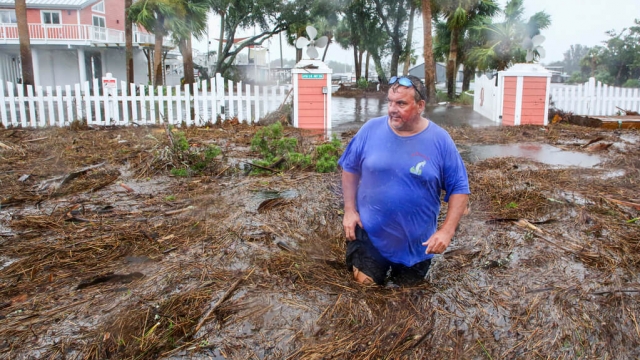The hours and days after a hurricane can be long and exhausting because of recovery efforts.
And for some, between insurance and damage or having a place to stay, the last thing on their mind is their health. But the days following a storm are unfortunately full of health risks.
In parts of Florida, Idalia's floodwaters stand about knee-high, and while it's somewhat easy to wade through, health experts recommend against it. Those waters can overwhelm sewer systems, resulting in murky, polluted water.
"Higher-temperature water is more prone to the development of bacteria and other things that could be of infectious origin," said Dr. Jay W. Lee from the American Academy of Family Physicians.
That means even the smallest cut could lead to any number of infections, and some infections can be life-threatening.
SEE MORE: Idalia exiting Carolina coast, leaving giant cleanup in 4 states
After Hurricane Ian in 2022, Florida's Department of Health reported a sharp increase in Vibrio infections, a rare flesh-eating bacteria, including 17 deaths.
Puncture wounds from leftover debris are also common in floodwaters.
"There's also chemicals that could be leached into the water from automobiles or other machinery, and those chemicals can burn, quite frankly, on a fresh cut or a wound," said Dr. Lee.
Standing water, even in a small container, is also a breeding ground for mosquitoes and the viruses that come with them.
And after the water has receded, mold and fungal infections can happen, too.
The best way to protect yourself is to avoid water if you can, and if you can't, cover and take care of wounds, and cover up with pants and boots as much as you can.
Trending stories at Scrippsnews.com



